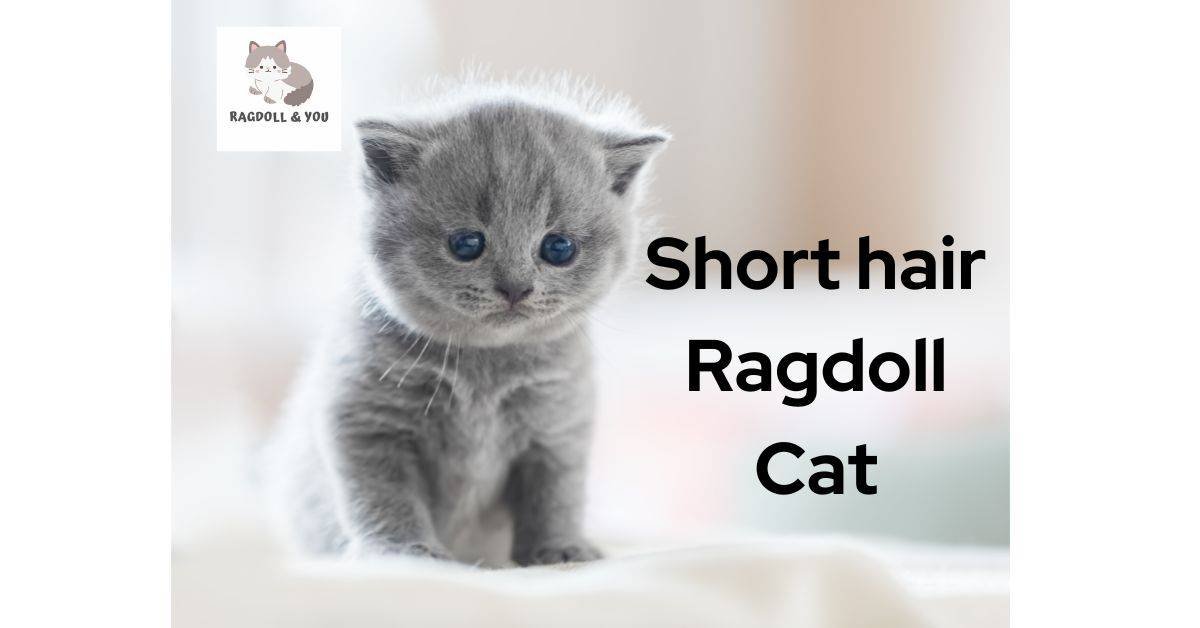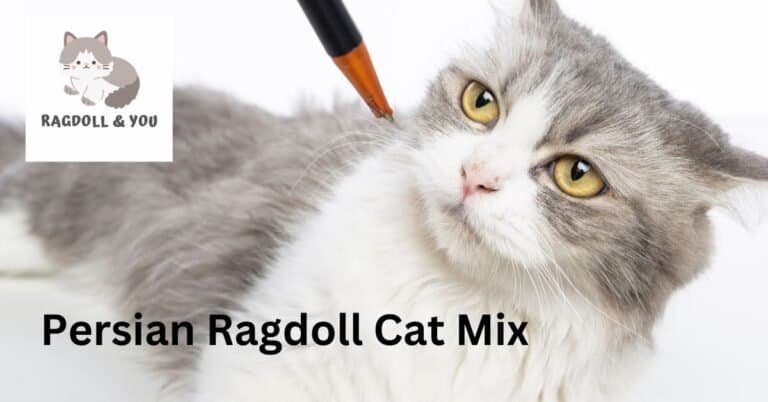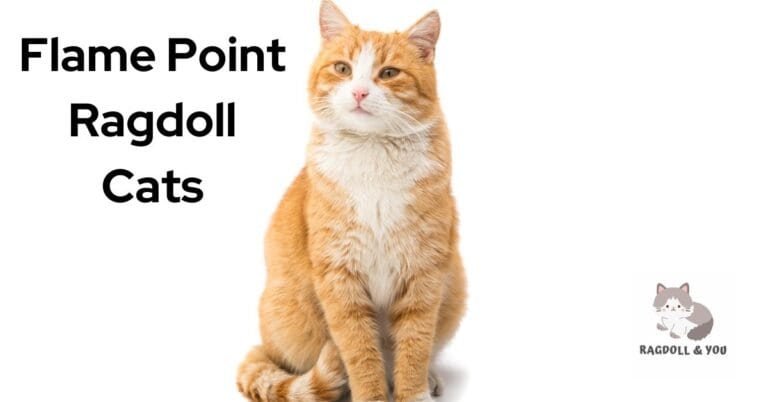Shorthair Ragdoll Cat: Is This For Real? Answers Today!
Are you suspicious that a short-haired Ragdoll isn’t purebred? Firstly, there is no such thing if you are looking for a Short-hair Ragdoll Cat. A purebred Ragdoll has medium to long fur.
If you see an adult Ragdoll with short hair, know that it was crossbred with cats like a British Shorthair A mixed breed of cat, part of Ragdolls, can end up with short hairs. You will never see a pure Ragdoll with short hair genes.

History & Origin Of The Shorthair Ragdoll Cat
The shorthair ragdoll cat has a fascinating history and origin. It dates back to the early days of this breed’s development.
The Earliest Records Of Shorthair Ragdoll Cats In History
Shorthair Ragdoll Cats first appeared in records a long time ago. They are often hybrids, not purebred cats.
Ann Baker, an American breeder from California, started the Ragdoll breed. She used three cats to create the breed.
One was Daddy Warbucks, a seal-mitted cat with a blaze on his nose. Some still argue whether Shorthair Ragdolls belong to the Ragdoll family or make up a separate race.
What You Need To Know About The British Shorthair
The British Shorthair is a big cat breed. They are strong and have heavy bones. Their body looks round and thick. This breed has been around for a long time.
It is one of the oldest companion cat breeds known today.
People think that Romans brought these cats to Britain long ago. The British Shorthair we know today comes from the old British house cat.
But now they are popular pedigree cats, which means they come from purebred parent breeds.
Formal Recognition Of Shorthair Ragdoll Cats
The Cat Fancier’s Association gave the shorthair Ragdoll cat formal acknowledgment. This child-friendly breed is not purebred but hybrid.
They often have a mix of British Shorthairs in them. Both breeds of cats are loved a lot in the UK. The traits of both breed standard can show up in this cat type.
Shorthair Ragdoll Cat Overview
Short Hair Ragdoll Cat Size, Height, And Weight
The size and weight of short-haired Ragdoll feline companions can vary. But they are generally one of the largest breeds. When fully grown, they measure between 17 and 23 inches in length from head to tail.
These cats also stand between 9 and 11 inches tall. Adult Ragdolls can weigh anywhere between 10 and 20 pounds. Male Ragdolls tend to be larger and heavier than females.
Ragdoll Shorthair Personality And Temperament
Shorthair Ragdoll cats are friendly and have a relaxed personality. They are laid-back and are often described as “floppy” because they go limp when held.
These gentle giants have a placid temperament. They get along well with all family members, including children and pets. Shorthair Ragdolls are highly intelligent, making training and teaching tricks easy.
They are also amiable and affectionate breeds, enjoying cuddling on the couch or following their pet owners around the house.
With their calm demeanor and loving nature, Shorthair Ragdolls make wonderful companions.
Short-Haired Ragdoll Training
Training a Short-haired Ragdoll cat ensures they are well-behaved.
Start Early:
Begin training your Short-Haired Ragdoll when they are still a kitten. This will help them learn faster and make training easier.
Use Positive Reinforcement:
Reward your companion cat with treats, praise, or playtime when they exhibit good behavior during training. This will encourage them to repeat the behavior.
Be Patient:
Training takes time and consistency. Be patient with your Short-Haired Ragdoll and repeat commands as needed until they understand what you’re asking of them.
Teach Basic Commands:
Start with teaching simple commands like “sit,” “stay,” and “come.” Use treats or toys to lure them into the desired position and reward them when they respond correctly.
Use A Clicker:
Consider using a clicker as a training tool. Click when your cat performs the desired behavior, followed by a reward. This helps reinforce positive actions.
Keep Training Sessions Short:
Cats have shorter attention spans than dogs. Keep training sessions short and frequent rather than long and infrequent.
Use Playtime For Mental Stimulation:
Incorporate interactive toys and puzzles into playtime to mentally stimulate your Short-Haired Ragdoll. This can help prevent boredom and destructive behavior.
Avoid Punishment:
Never use physical punishment or yell at your cat during training. This can create fear or anxiety, making it more challenging to train them effectively.
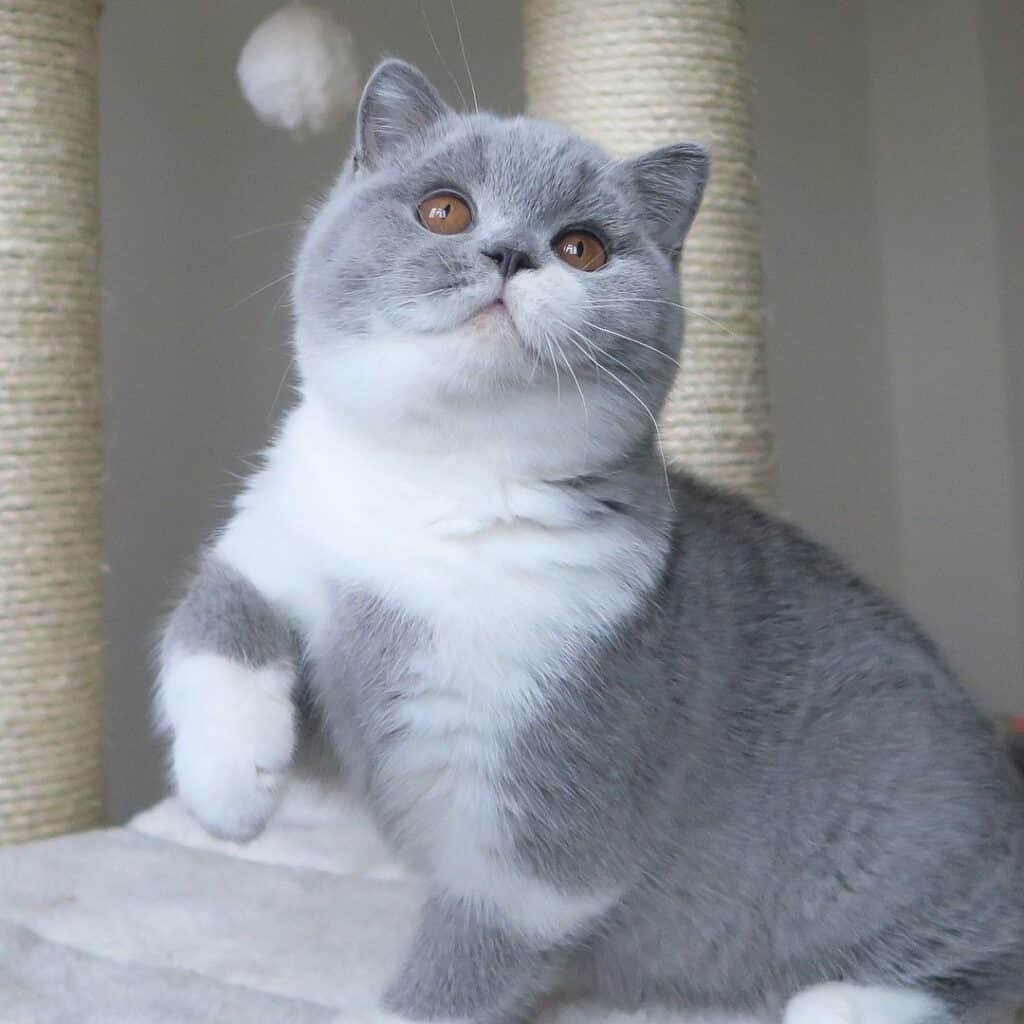
Short Haired Ragdoll Cat Exercise Requirement
Short-haired Ragdoll cats need regular exercise for a happy and healthy life.
- Ragdolls require daily playtime to keep them active and mentally stimulated.
- Interactive toys, like feather wands or puzzle toys, can provide exercise and engage their hunting instincts.
- They enjoy chasing and playing with balls.
- Set aside 15 – 20 minutes daily for focused play sessions with your Ragdoll.
- Create a dedicated play area in your home where they can climb, jump, and explore safely.
- Consider using a scratching post or cat tree to encourage them to climb and stretch their muscles.
- Supervise your Ragdoll during outdoor playtime in a secure yard or on a leash.
- Regularly rotate their toys to keep things interesting and prevent boredom.
Shorthair Ragdoll Grooming And Cleaning
Taking proper care of a shorthair Ragdoll cat includes regular grooming and cleaning tasks.
- Brush their coat of fur at least twice weekly to prevent matting and entangled hairs and reduce shedding.
- Use a slicker brush to fix entangled hairs. Avoid steel bristles that may hurt the cat. Aumuca Cat Brush is an excellent tool.
- Pay attention to oral care by regularly brushing your cat’s teeth using cat-friendly toothpaste. Arm & Hammer Dental Kit maintains optimal hygiene in cats.
- Wipe away any crust or discharge around the cat’s eyes with a soft, damp cloth. You can use Earthbath cat wipes too.
- Clean the ears monthly using a vet-approved ear cleaner like PetArmor and cotton balls. Be careful; don’t insert anything too far into the ear canal.
- Bathe your shorthair Ragdoll cat occasionally using gentle cat shampoo like Mooncat Waterless Shampoo. Rinse thoroughly, and dry them completely afterward.
- Give them high-quality cat food for good health. A combination of dry food and wet food is excellent.
- Nail trimming is a crucial part of their frequent grooming. It will protect you and the sofas, curtains, and furniture. Cat Republique Nail Clipper effectively trims cat nails.
Summer Ragdoll Haircut
Ragdoll cats have beautiful long fur. Some pet owners may wonder if they need a summer haircut. The good news is that Ragdolls do not require regular haircuts like other lovely breeds.
Their glossy coat of fur can be left to grow and shed naturally.
During the summer, cat lovers may notice their luxurious coats becoming shorter and less fluffy than their winter coats. This is completely normal as their body adjusts to the warmer weather.
Shaving a Ragdoll’s fur can change color or appearance. It’s best to let their fur naturally adjust for the season.
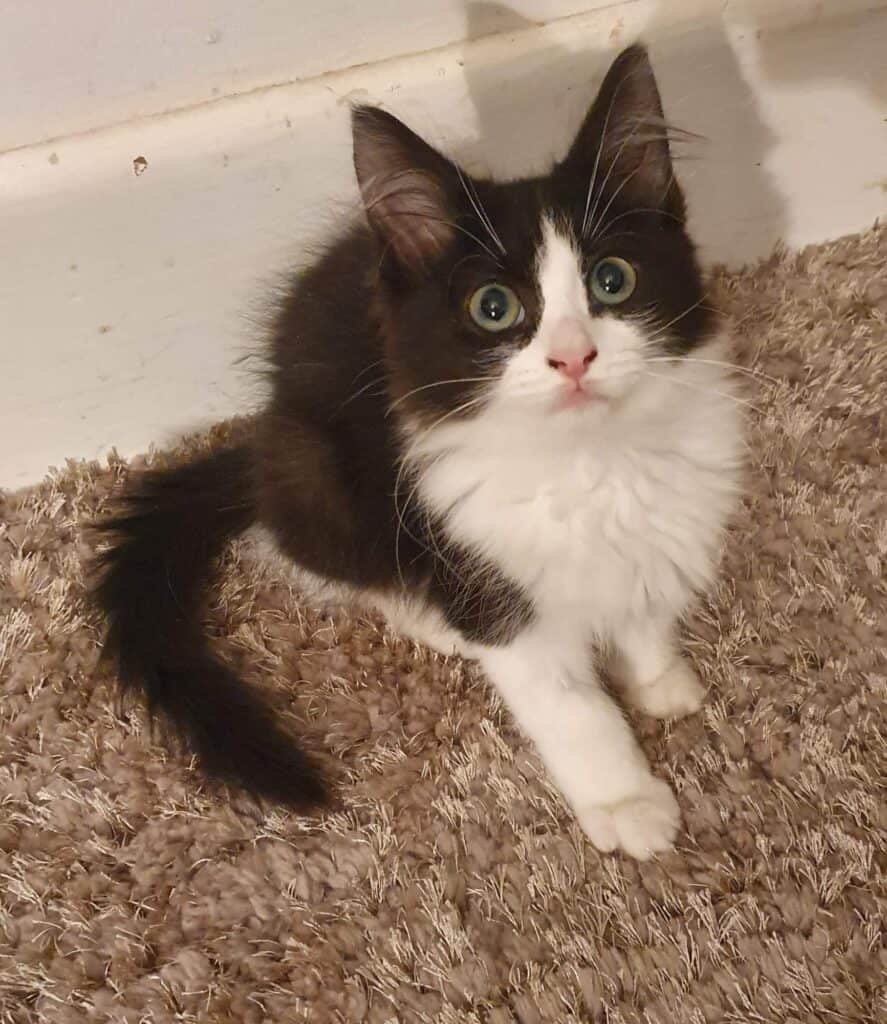
Ragdoll Short Hair: Pros and Cons
Ragdoll Short Hair cats have unique characteristics that make them stand out. Here are some of the major pros and cons.
| Pros | Cons |
| Shorthair Ragdolls have a more manageable plush coat, making grooming less hassle than longhair counterparts. | Shorthair Ragdolls can result from crossbreeding, which may introduce health issues prevalent in the other breed standard. |
| They have a docile temperament, making them great companions. | Despite a short coat, these cats can still shed, impacting people with allergies. |
| They are usually healthier and less prone to certain genetic diseases than purebred cats. | All cat registries do not recognize them due to their mixed breed status. |
| The non-matting silky coat with the shiny texture of the Shorthair Ragdoll is attractive and easy to maintain. | They may not be suitable for outdoor living due to their docile nature and tendency to trust humans. First-time pet owners may find it challenging. |
| Ragdolls have striking, beautiful blue eye color, giving them a distinctive look. | Finding a genuine Ragdoll Shorthair can be challenging as many kittens for adoption may be mixed breeds. |
Ragdoll Short Hair Health Issues
Hypertrophic Cardiomyopathy (HCM)
Hypertrophic Cardiomyopathy (HCM) is a common heart condition in certain cat breeds, including Ragdolls and British Shorthairs. It usually becomes apparent when cats reach adulthood.
HCM has a strong genetic makeup link and can cause difficulty breathing, rapid breathing, lethargy, and sudden loss of consciousness. Other cat breeds at increased risk for HCM include Maine Coons, Persians, Bengals, Sphynx cats, and Norwegian Forest Cats.
Regular check-ups help monitor the heart health of these lovely breeds and catch any potential issues early on.
Feline Lower Urinary Tract Disease (FLUTD)
Like many other breeds, Ragdoll cats are prone to Feline Lower Urinary Tract Disease (FLUTD). FLUTD is not a specific disease but a collection of symptoms. It includes painful urination, blood in the urine, and urinating outside the litter box.
In severe cases of FLUTD in Ragdoll cats, hair loss may occur. Treatment for urinary tract infections can vary depending on the cat’s health condition. In severe cases, euthanasia may be considered.
A Ragdoll cat owner must know about this potential health issue and seek vet visits if needed.
Obesity
Obesity is a common problem among Ragdoll cats. This means they weigh more than what is healthy for their size. Obesity puts them at risk of developing potential health issues like diabetes and heart problems.
One in three domestic cats in the United States is overweight or obese. Being overweight makes it harder for Ragdolls to move around and can lead to joint pain and difficulty breathing.
Keep your Ragdoll cat at a healthy weight by providing balanced meals and regular exercise.
Dental Disease
Dental disease is a common health issue for Ragdoll cats. These cats are prone to periodontal disease, which can lead to tooth loss if left untreated.
Care for your cat’s dental health by regularly brushing their teeth and using appropriate chew toys.
Dental problems can be chronic in pets, including Ragdolls. It’s crucial to maintain good oral hygiene for overall well-being.
Various Short Hair Ragdoll Colors and Patterns
Short Hair Ragdoll cats come in various colors and patterns, including black, tan, dark brown, and grey.
Black Short Hair Ragdoll Cat
The Black Short Hair Ragdoll cat is a unique hybrid breed with shorter hair than traditional Ragdolls. No purebred black Ragdolls exist.
These cats have inherited their shorter pet hair from crossbreeding with other breeds like the British Shorthair.
The Black Short Hair Ragdoll maintains its luxurious and silky semi-longhair fur, which adds to its mystique and charm. The official cat associations do not recognize Black Ragdolls as purebred.
Despite this, these cats are beloved for their beautiful appearance and distinct personality traits.
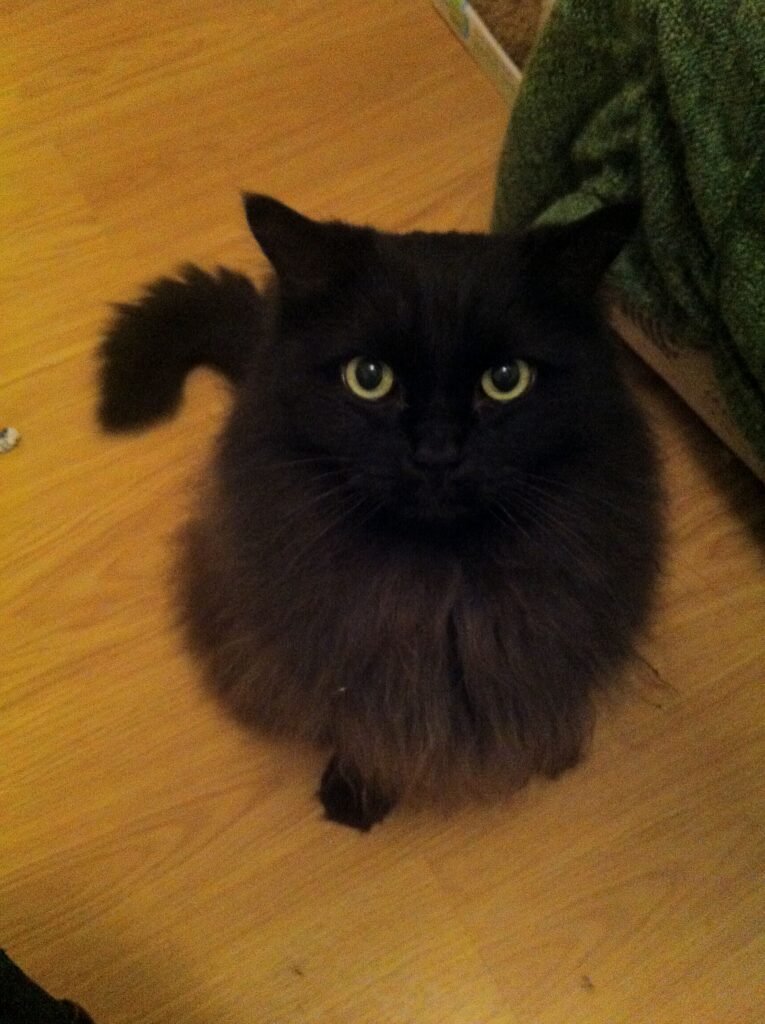
Tan Short Hair Ragdoll
Tan Short Hair Ragdolls are a unique and beautiful color variation of the Ragdoll cat breed. They have a warm honey-beige color with light nose leather and paw pads.
Unlike the traditional long-haired breed of Ragdolls, these cats have a short layer of hair that is non-matting and silky and shiny.
Tan Short Hair Ragdolls are friendly and affectionate, making them great family companions. Tan Short Hair Ragdolls’ glossy coat color and delightful personality stand out.
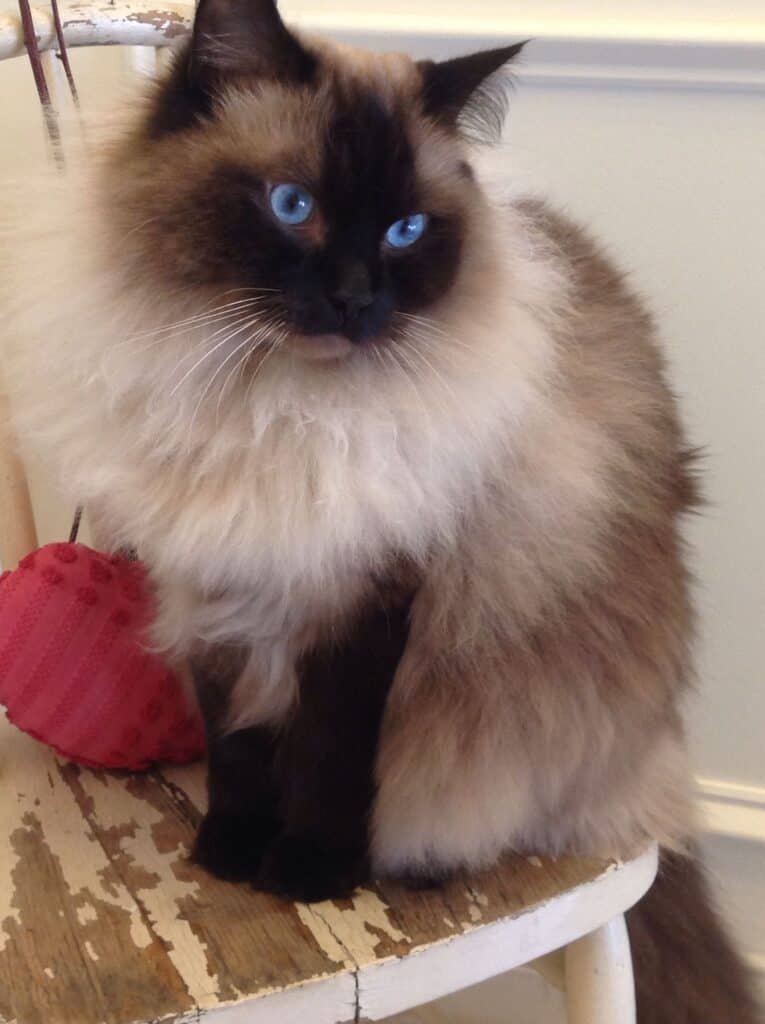
Dark Brown Ragdoll Short Hair
The Dark Brown Ragdoll Short Hair is a beautiful variation of the Ragdoll breed. It has a shorter coat in a rich, dark brown color.
While most Ragdolls have longer hair, the shorthair variety has a shorter and possibly thicker coat.
These cats still maintain all the charming characteristics of their longer-haired counterparts. A few include affectionate nature and striking blue eyes.
The Dark Brown Ragdoll Short Hair adds a unique touch to this popular breed.
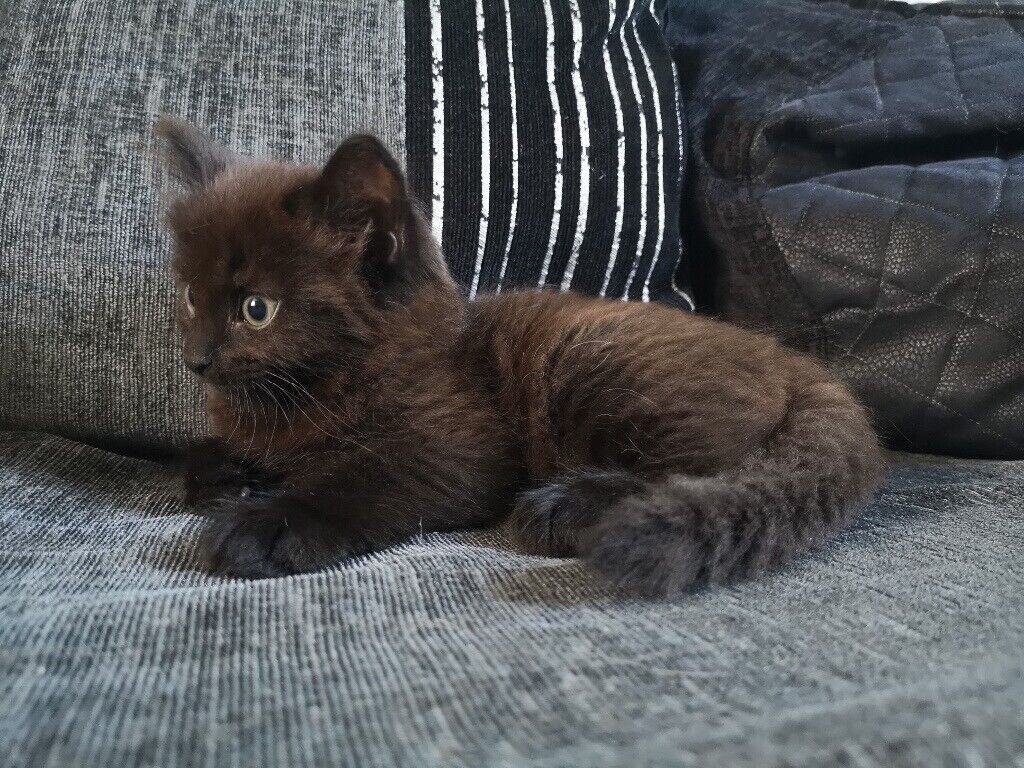
Grey Ragdoll Short Hair
The Grey Ragdoll cat is a beautiful breed with a range of coat colors from light grey to dark charcoal.
If you come across a Ragdoll cat with shorter fur, it’s likely a mixed breed or crossbreed, possibly with the British Shorthair.
While these mixed breeds may have shorter hair, true Ragdolls will always have longer fur.
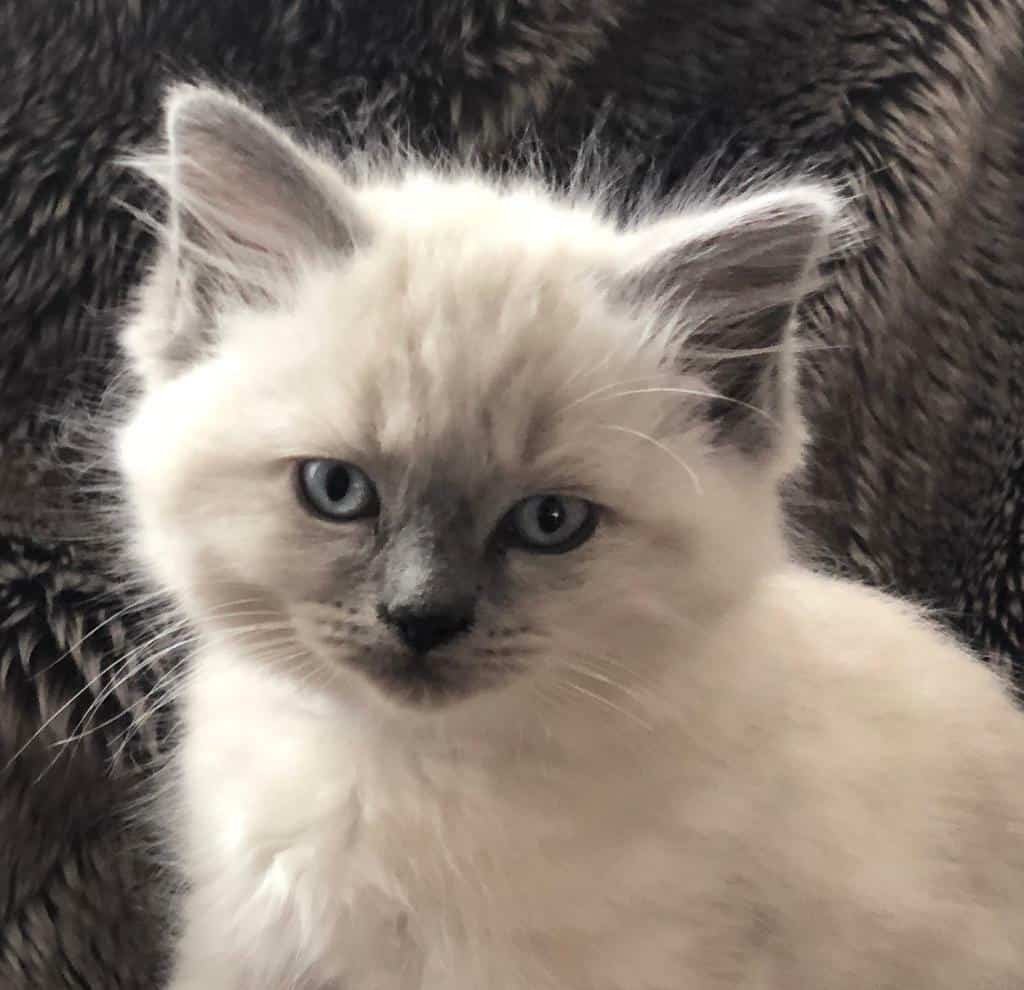
Does the Ragdoll Shorthair Cat Make a Good Pet?
The Ragdoll Shorthair cat is a child-friendly pet. They have a friendly and affectionate nature, often compared to that of a puppy.
They are known for getting along well with other pets. This makes them a good choice for households with multiple animals.
While their coat may not be as long as the traditional Ragdoll, they still require frequent grooming. True Shorthair Ragdolls result from crossbreeding with another breed, as purebred Ragdolls have longer coats.
Where To Find A Ragdoll British Shorthair Mix Breed Cat For Sale?
Ragdoll British Shorthair mix breed cat is uncommon and may not be easily found by registered breeders. Interested buyers can look for these mixed-breed kittens on online classifieds websites.
The International Cat Association (TICA) is a reputable organization that registers and recognizes popular cat breeds.
Checking their website or contacting TICA-registered breeders might provide some leads. Here are a few reputable breeders –
- Blueberry Dolz in Michigan, USA
- Kitten Paradise in Arizona, USA
- Adorable Ragdolls in California, USA
- Mystic Ragdolls in Colorado, USA
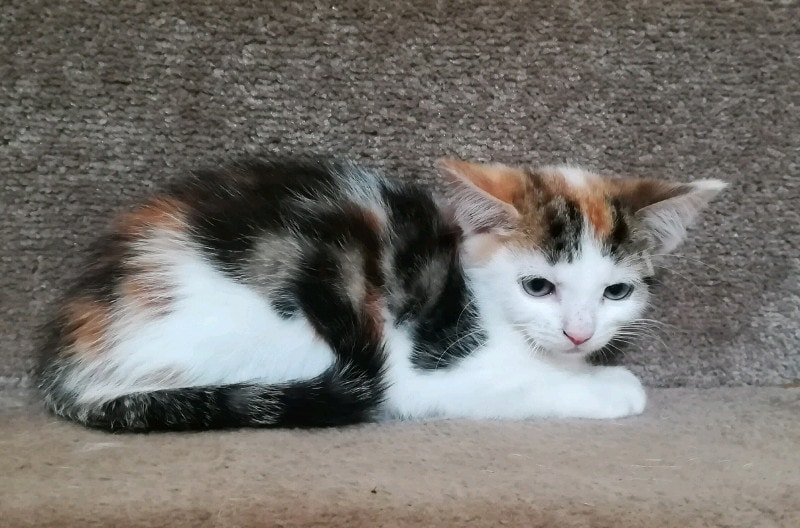
FAQ
Do Cat Registries Recognize Ragdoll Cats’ Short Hair?
Any cat registry does not recognize Shorthair Ragdoll cats because they are considered hybrids. Want to be sure that a cat is a purebred Ragdoll? You will need official papers from a responsible breeder or a DNA test.
Do Short Hair Ragdoll Cats Shed?
Short Hair Ragdoll cats shed some fur but are known for being low-shedding. They have a silky, thicker coat that requires regular grooming to keep it healthy and reduce shedding.
During shedding season, Ragdolls can carry allergens in their fur, which may cause an allergic reaction. Crossbred Ragdoll cats may have shorter hair due to mixed breeding standards.
Ragdolls shed more than many other popular cat breeds, making them less suitable for people with cat allergies. Regular grooming can maintain the coat’s health and reduce shedding in Ragdoll cats.
Are Short Hair Ragdoll Cats Hypoallergenic?
Short Hair Ragdoll Cats are not hypoallergenic. While they may not have an undercoat, some people can still be allergic to them.
Even though their fur might be shorter, Ragdolls can still trigger allergies in individuals with sensitivities.
If you have severe allergies, don’t get a Ragdoll cat, whether it has short hair or long hair.
Are Short Haired Ragdoll Cats Outdoor Or Indoor Cats?
Short Haired Ragdoll Cats are primarily indoor cats like their long-haired breed of feline breeds. This is because Ragdolls are friendly and docile cat breeds.
It makes them vulnerable to outdoor dangers like traffic accidents or encounters with other animals.
Many Ragdoll pet parents allow their cats supervised outdoor time in controlled environments like enclosed yards or screened-in porches. It helps them provide mental stimulation and exercise.
Do Short Hair Ragdoll Cats Love Water?
While not all Ragdoll cats are fans of water, some may enjoy playing with it. They’re unlikely to go for a swim like some other popular cat breeds might.
Ragdolls have a gentle nature and are loving. But their preference for water can vary from individual to individual.
While your short-haired Ragdoll cat may enjoy splashing around with water playtime, don’t expect them to dive into a pool or bathtub willingly.
How Long Do Short Hair Ragdolls Live?
There is no such thing as a shorthair Ragdoll cat. All Ragdolls have medium to long hair. The average lifespan of a Ragdoll cat is 12 to 15 years, but some can live as long as 20 or 25 years

